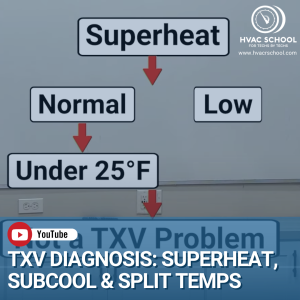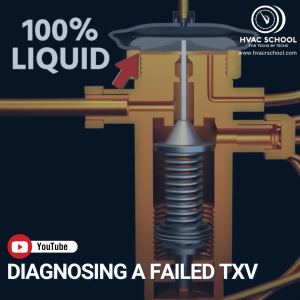BACK
 How to Diagnose a TXV Failure
How to Diagnose a TXV Failure
 What is a HSO (Non-Bleed) TXV/TEV?
What is a HSO (Non-Bleed) TXV/TEV?
 Mounting the TXV Bulb
Mounting the TXV Bulb
 Setting and Adjusting Superheat on a TXV System
Setting and Adjusting Superheat on a TXV System
 Brazing in TXVs: Best Practices
Brazing in TXVs: Best Practices
 TXV External Equalizers and Distributors
TXV External Equalizers and Distributors
 Piston vs. TXV Metering Devices
Piston vs. TXV Metering Devices
 Why and How to Adjust a TXV/TEV
Why and How to Adjust a TXV/TEV
 Diagnosing and Finding a Refrigerant Restriction
Diagnosing and Finding a Refrigerant Restriction
 TXV Troubleshooting – Short #245
TXV Troubleshooting – Short #245
 Superheat Talk w/ JD Kelly
Superheat Talk w/ JD Kelly
 TXV Operation, Diagnosis, and Failure w/ Jamie Kitchen (Podcast)
TXV Operation, Diagnosis, and Failure w/ Jamie Kitchen (Podcast)
 Heat Pumps, Reversing Valves, and Defrost Podcast
Heat Pumps, Reversing Valves, and Defrost Podcast
 How a TXV Works and Why I Call it a CSV
How a TXV Works and Why I Call it a CSV
 The 5 Readings Every Tech Must Know Well
The 5 Readings Every Tech Must Know Well
 Refrigeration Tips For A/C Techs
Refrigeration Tips For A/C Techs
 Demystifying TEVs
Demystifying TEVs
#TXV
Tech Tips:
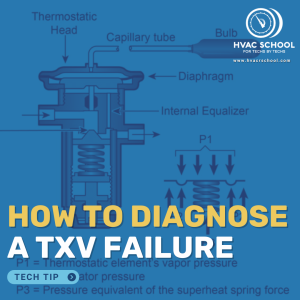
There has been much written and many jokes made about the misdiagnosis of TXV (thermostatic expansion valves), and rightly so. This article will cut straight to the point to help those of you who may still need a bit of clarification, and hopefully, we will save the lives of a few TXVs and the pocketbooks […]
Read more
There is a lot of misunderstanding about the HSO (hard shut-off) or “non-bleed” TXV (thermostat expansion valve) and what makes it shut off, why it exists, and how it “magically” opens. Once you understand the forces inside the valve, it is quite simple, obvious, and sadly devoid of any magic. The Three Forces The TXV […]
Read more
This is a quick tip from the “Expansion Valves – What Does and Doesn't Matter?” livestream on our YouTube channel featuring Joe Shearer, Matthew Taylor, and Corey Cruz. Thermostatic expansion valves (also known as TXVs or TEVs) don’t have little brains that tell them when to open or close to maintain a specific superheat. They […]
Read more
This is a quick tip from the “Expansion Valves – What Does and Doesn't Matter?” livestream on our YouTube channel featuring Joe Shearer, Matthew Taylor, and Corey Cruz. As metering devices, TXVs can adjust the size of their orifice to maintain a constant superheat. Some TXVs are set to maintain a specific superheat from the […]
Read more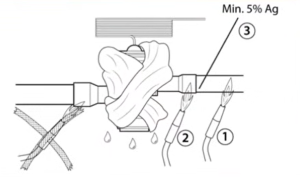
This is a quick tip from the “Expansion Valves – What Does and Doesn't Matter?” livestream on our YouTube channel featuring Joe Shearer, Matthew Taylor, and Corey Cruz. It’s time to talk about brazing again! Even though rehashing “flow nitrogen” and “use a wet rag” gets a little old, bad TXVs and callbacks also get […]
Read more
This is a quick tip from the “Expansion Valves – What Does and Doesn't Matter?” livestream on our YouTube channel featuring Joe Shearer, Matthew Taylor, and Corey Cruz. You can watch it on our website HERE. Equalizers get their name because they provide a closing force to equalize against the bulb pressure (an opening force). […]
Read more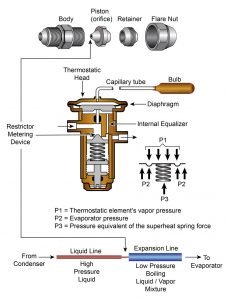
The piston (fixed orifice) and TXV (thermostatic expansion valve) are the two most common metering devices in use today, though some modern systems utilize an electronically-controlled metering device called an EEV (electronic expansion valve). It should be noted that there are other types of fixed-orifice metering devices, like capillary tubes; however, their use is not […]
Read more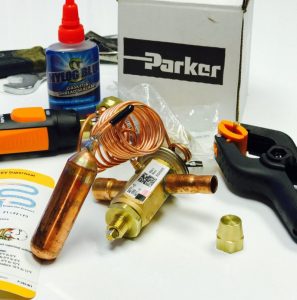
As we discussed in an earlier podcast, a TXV maintains a specified and constant superheat at the evaporator coil outlet. It does this through a balance of forces between the bulb pressure (opening force), equalizer pressure (closing force), and spring pressure (closing force). We can actually adjust the spring pressure on some valves. But why […]
Read more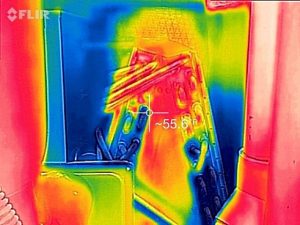
Photo by Ulises Palacios Refrigerant circuit restrictions can be common things like a plugged filter drier or a restricted metering device. They can also be more difficult to diagnose and stem from exotic issues like a kinked liquid line, blocked evaporator feeder tube, or a compressor connected improperly with a discharge line full of solder […]
Read moreVideos:
Podcasts:

In this short podcast episode, Bryan walks through some common thermostatic expansion valve (TXV) troubleshooting scenarios. Many of the same principles apply to troubleshooting electronic expansion valves (EEVs). These dynamic metering devices maintain a constant superheat. Troubleshooting does NOT start and end with the TXV. First, you need to inspect components (especially filters, ductwork, […]
Read more
In this episode of the HVAC School podcast, host Bryan discusses superheat with guest JD, who recently co-authored an article on the topic with Ty Branaman. The conversation explores the often misunderstood concept of superheat, its importance in HVAC diagnostics, and common misconceptions technicians have when measuring and interpreting it. Bryan begins by sharing […]
Read more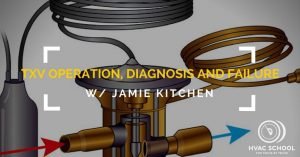
In this episode, Bryan talks with Jamie Kitchen from Danfoss about why and how thermostatic expansion valves (TXVs) fail and how they function in the first place. As fixed orifices become a dying breed with the development of higher-efficiency systems, TXVs take over the mantle as the primary method of expansion. Expansion valves meter the […]
Read more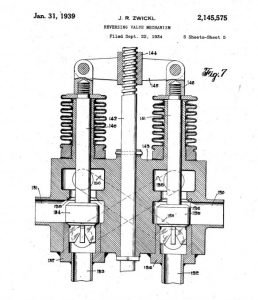
In this episode of HVAC School, Bryan covers the basics of heat pumps. Heat pumps are common technologies in Florida. They reverse the sequence of the typical refrigerant circuit: the indoor coil can become the condenser, and the outdoor coil can become the evaporator. Heat pumps can achieve that transition via a reversing valve, which […]
Read more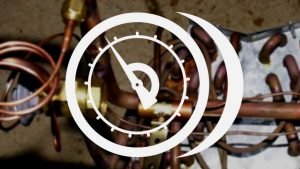
In this episode of HVAC School, Bryan talks to Leslie about the deceptive TXV. Thermostatic expansion valves, also known as TXVs or TEVs, are metering devices that maintain superheat. They contain an external equalizer. External equalizers give the pressure reading that you would normally take with a suction gauge at the end of the evaporator […]
Read more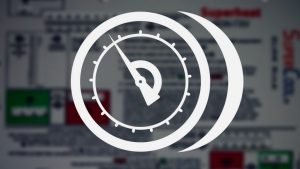
In this episode of HVAC School, Bryan covers the “5 pillars of refrigerant circuit diagnosis” and why they matter. They are: Superheat Subcool Suction pressure Head pressure Air temp split (delta T) These 5 readings give you a holistic idea of the A/C system. Instead of getting hooked on checking only superheat and subcool […]
Read more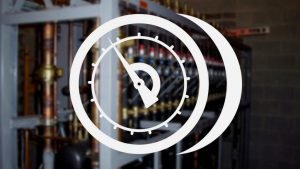
In this episode of the HVAC School Podcast, Bryan talks with Jeremy Smith about refrigeration tips, terms and processes. They also cover the similarities and differences between A/C and refrigeration. Being on-call as an A/C tech is not all that different from being on-call as a refrigeration tech. Similarly, the principles of heat transfer don't […]
Read moreEvents:

NOTE: If you cannot view the recording, the video may still be processing. The maximum wait time is 24 hours. We apologize for the delay and appreciate your patience.
Read more
